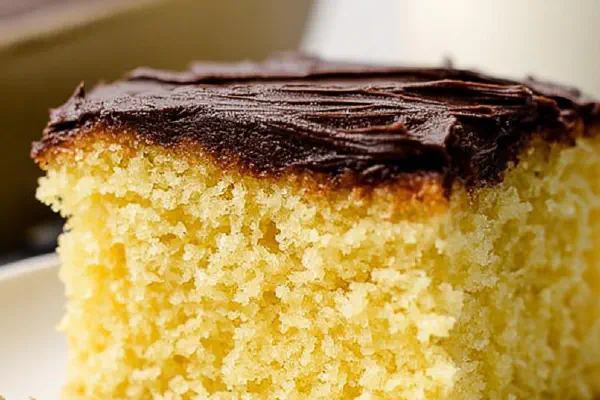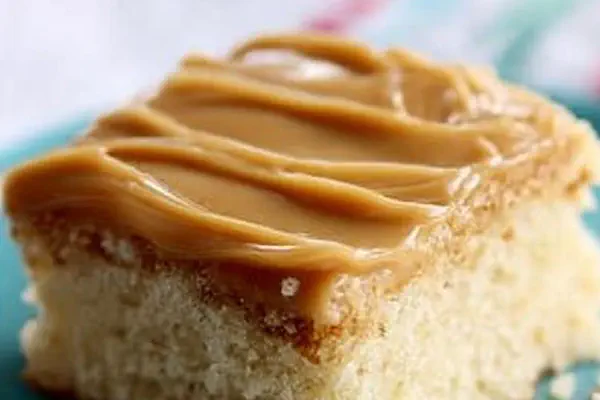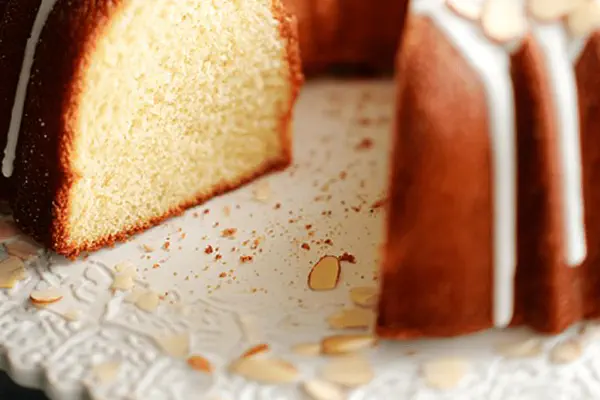Lemon Apricot Nectar Cake

By Emma
Certified Culinary Professional
Ingredients
- 1 box yellow cake mix (swap original for white cake mix for lighter crumb)
- 3/4 cup granulated sugar (reduced from original to cut sweetness)
- 1 cup apricot nectar (can replace with peach or white grape juice)
- 1/3 cup vegetable oil (can use canola or melted coconut oil for different fats)
- 3 large eggs (room temperature for better rise)
- 1 cup powdered sugar
- 2 tablespoons fresh lemon juice
About the ingredients
Method
Prepare pan
- Heat oven to 320°F; this lower temp helps even rise without cracking. Grease well using softened butter or spray, then dust generously with flour—cornmeal works if wanting a rustic crust. Set aside.
Mix batter
- In mixing bowl, combine cake mix, sugar, apricot nectar, oil, eggs. Start on low speed to avoid flour clouds. Then bump to medium for about 2 ½ minutes until thickened and slightly shiny. Don’t overmix or crumb will toughen.
Bake cake
- Pour batter into pan. Tap pan lightly on counter to knock out large air bubbles; uneven bubbles cause holes. Slide into oven on middle rack. Watch coloring closely after 35 minutes. Toothpick or skewer should come out nearly clean; a few moist crumbs okay, raw batter not.
Cool & unmold
- Let cake rest 12 minutes in pan—less time leads to breakage when flipping, more and cake will stick. Loosen edges gently with knife or spatula. Cover top with serving plate, invert briskly but with care. Tap gently if stuck. Cool completely for glaze.
Glaze
- Whisk powdered sugar and lemon juice until creamy but pourable. If too thick add a splash more juice; too runny add sugar. Drizzle warm or room-temp cake. Glaze will soak some, set slightly with a slight crackle. Cooler days thicken glaze sooner.
Cooking tips
Chef's notes
- 💡 Room temp eggs - helps trap air when whipped. Cold eggs kill lift, batter flat. Whip sugar too - shaky medium speed. Avoid nuking flour in cloud. Moves slow then up speed. Gets shiny and thick clues for done mixing.
- 💡 Pan prep matters big. Butter or spray, then dust flour well. Cornmeal dust for crunchy texture alternative. Watch corners and edges. If stuck, freeze cake 10 min for release. Avoid knife hacking – risking breaks.
- 💡 Baker’s eye, not clock. Oven at 320°F slower rise. After 35 min check color, edges golden, springy press tip for bounce. Toothpick with moist crumbs alright, raw batter no. Odd bubbles? Tap batter pan firmly before bake.
- 💡 Glaze thickness adjusted by powdered sugar and lemon juice ratio. Too thick, add juice splash. Too runny, dump more sugar. Drizzle warm cake seeps in, sets with crackle. Cooler kitchens speed firming. Add vanilla or salt tweak flavor balance.
- 💡 Substitutions work: apricot nectar swapped with peach or white grape juice. Lemon zest to juice backup restore acidity. Oil types matter — veggie standard. Coconut or canola shift aroma and fat profile. Avoid extra virgin olive oil overpowering flavor.
Common questions
Why room temp eggs matter?
Eggs whip better. Cold kills foam. Bounce in batter lost. Batter dense if skipped. Tried once with fridge eggs flop flat crumb. Last time learned that hard way.
Can I use juice instead of nectar?
Yes but add lemon zest for acidity punch. Plain juice dries crumb more. Nectar’s sugar and tart blend balances cake moisture better. Peach or grape juice swap easy, changes flavor slightly.
Cake stuck in pan, what now?
Freeze 10 min cold tightens edges release. Dust pan heavily before bake. Cornmeal dust is slight crunch win. Knives risk break and ugly. Pan grease plus flour key. Middle rack placement prevents uneven brown or dry edges.
How to store leftovers?
Room temp covered loosely or foil tent works day or two. Fridge dries crumb faster. Freeze leftover glaze separately if thick, warm gently to reuse. Cake better next day resting flavors meld. Real talk, eating fresher is best but safe options exist.



